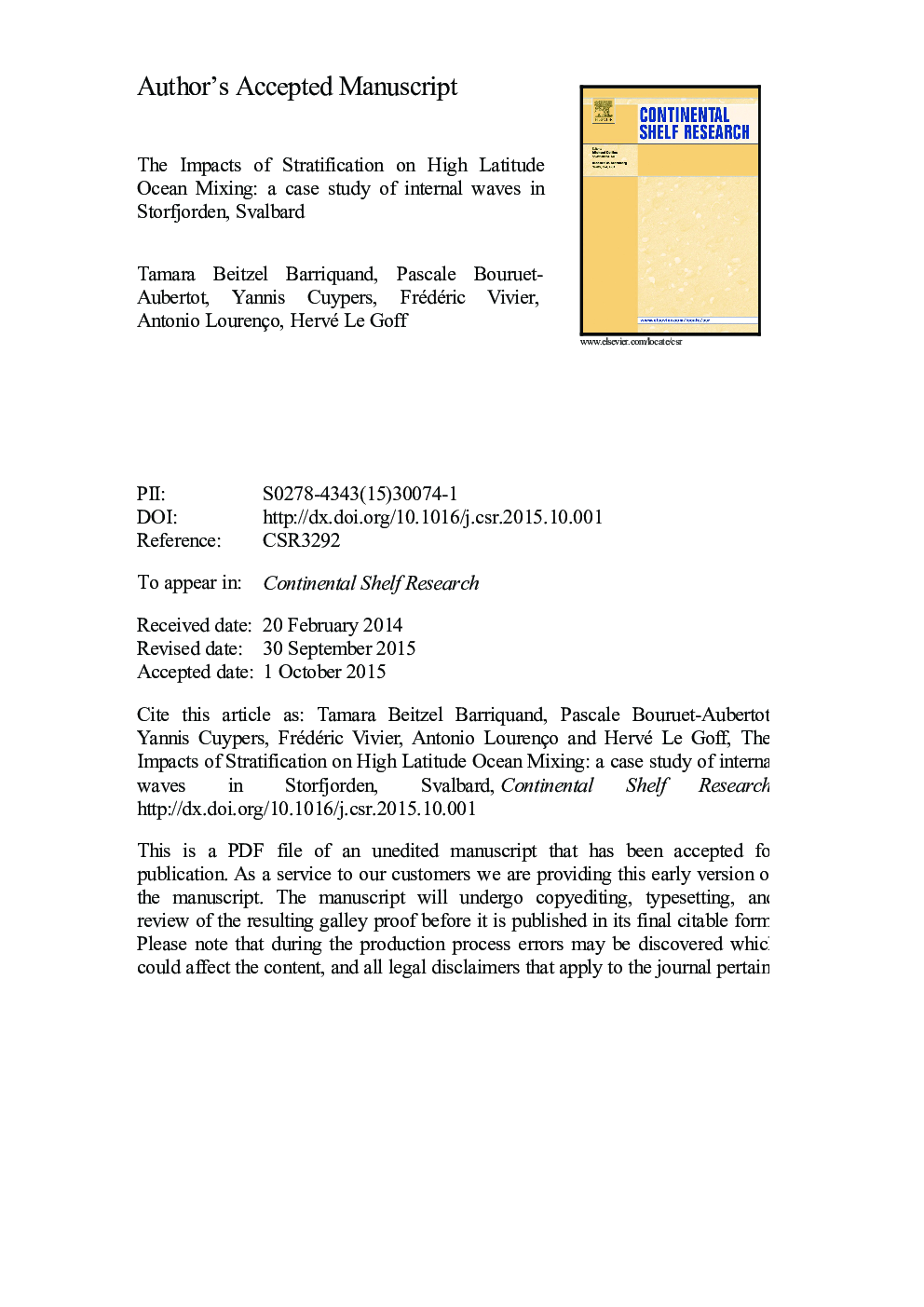| Article ID | Journal | Published Year | Pages | File Type |
|---|---|---|---|---|
| 6382987 | Continental Shelf Research | 2015 | 44 Pages |
Abstract
Hydrographic and velocity measurements were taken over four different time periods from April to May 2005-2007 at adjacent stations in Storfjorden, Svalbard. Different environmental conditions, including winds, ice cover, and water mass contributions, yield notably different stratification (N2) profiles among the time series. When classified according to the Gerkema (2001) classification system, the stratification profiles span the spectrum with two profiles resembling that of a two-layer fluid, one resembling more closely a fluid of constant stratification, and one falling in between the two extremes. The different N2 profiles elicit sharply contrasting modal responses from the internal wave field, which is dominated by mode 1 during the two time series most resembling a two-layer fluid, and nearly evenly spread out among the first five modes during the time series with a nearly constant stratification. Turbulent dissipation rates determined from fine-scale parameterizations reveal an average rate on the order of 10â9Wkgâ1 for all time series with an associated average diapycnal diffusivity of 10â5m2sâ1-10â4m2sâ1. Turbulent heat fluxes, determined from the estimated turbulent dissipation rates, ϵ, were found to have a relative maximum at the tops of the pycnoclines, with values up to 1Wmâ2, typical of ice-covered conditions. The turbulent dissipation rate and diapycnal diffusivities for each time series vary with the Gerkema (2001) stratification profile rankings, and are elevated for the time series most resembling a fluid of constant stratification, and reduced for the time series most similar to a two-layer fluid.
Related Topics
Physical Sciences and Engineering
Earth and Planetary Sciences
Geology
Authors
Tamara Beitzel Barriquand, Pascale Bouruet-Aubertot, Yannis Cuypers, Frédéric Vivier, Antonio Lourenço, Hervé Le Goff,
